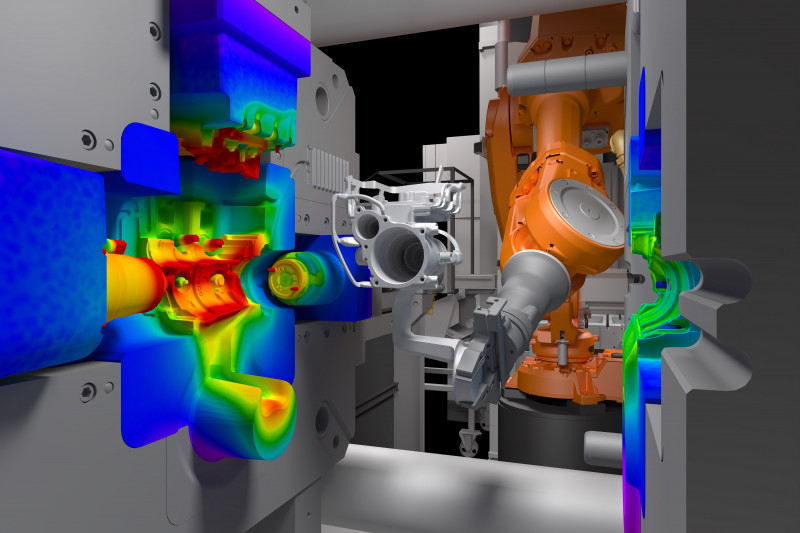Innovation has always been crucial for the progress and growth of industries across the globe. It is the driving force behind the development of new products and services that meet the ever-changing demands of consumers. However, innovation is not a straightforward process. It requires experimentation, trial and error, and most importantly, the ability to prototype and test ideas before they are fully implemented. In recent years, advancements in prototype manufacturing have revolutionized the way industries innovate, paving the way for unprecedented levels of creativity and efficiency.
The Importance of Prototyping
Before diving into the advancements in prototype manufacturing, it is essential to understand the significance of prototyping in the innovation process. Prototyping involves creating a scaled-down version of a product or service to test its feasibility, functionality, and performance. It allows designers, engineers, and innovators to visualize their ideas, identify potential flaws or improvements, and make necessary adjustments before moving forward with mass production.
Prototyping offers several advantages. Firstly, it reduces the risk of failure by identifying design flaws and functional issues early in the development process. This saves companies time and resources that would otherwise be wasted on producing a product that does not meet the desired standards. Secondly, prototyping allows for collaboration and feedback from various stakeholders, including end-users, which ensures that the final product meets their needs and expectations. Lastly, prototyping enables faster time-to-market, as it allows for iterative design improvements and efficient testing of multiple concepts.
Advancements in Prototype Manufacturing
Advancements in technology have transformed the prototype manufacturing landscape, making it more accessible, cost-effective, and efficient than ever before. The following are some notable advancements that have paved the way for innovation:
1. 3D Printing: Also known as additive manufacturing, 3D printing has revolutionized the way prototypes are created. It allows for the rapid production of physical models by adding layers of material based on a digital design. 3D printers can work with a variety of materials, including plastics, metals, and even living tissue. This technology enables faster turnaround times and reduces the cost associated with traditional manufacturing methods.
2. Computer-Aided Design (CAD): CAD software has played a vital role in streamlining the prototype manufacturing process. It enables designers to create detailed digital models that can be easily modified, tested, and optimized before being sent to production. CAD software also facilitates collaboration and communication between different stakeholders, reducing errors and improving overall efficiency.
3. Rapid Prototyping: Traditional manufacturing methods often require significant time and investment to create prototypes. However, rapid prototyping technologies have changed the game by providing quick and cost-effective solutions. Techniques such as CNC machining, vacuum casting, and injection molding allow for the production of high-quality prototypes within days or even hours.
4. Virtual Prototyping: Virtual prototyping utilizes computer simulations and virtual reality to create digital representations of products or services. It enables designers to test and evaluate different design aspects, such as ergonomics, performance, and aesthetics, without the need for physical prototypes. Virtual prototyping reduces costs, speeds up the design process, and allows for more extensive experimentation.
Benefits and Impact on Innovation
The advancements in prototype manufacturing have had a significant impact on innovation across industries. Firstly, it has democratized innovation, making it accessible to small and medium-sized enterprises (SMEs) and individual entrepreneurs. The reduced cost and increased efficiency of prototyping technologies have leveled the playing field, enabling SMEs to compete with larger corporations in terms of innovation and product development.
Secondly, rapid prototyping has accelerated the innovation cycle. It allows for faster design iterations, quick identification of flaws, and prompt improvements. As a result, companies can bring new products to market faster, gaining a competitive edge and increasing customer satisfaction.
Additionally, the accessibility of prototyping technologies has fueled creativity and experimentation. Innovators can now test multiple concepts and explore unconventional ideas without incurring significant costs. This has led to the development of breakthrough products and services that address unmet consumer needs and disrupt traditional industries.
Conclusion
Advancements in prototype manufacturing have revolutionized the way industries innovate. Technologies such as 3D printing, CAD, rapid prototyping, and virtual prototyping have made prototyping more accessible, cost-effective, and efficient. The benefits of these advancements span across various industries, democratizing innovation, accelerating the innovation cycle, and fostering creativity. As technologies continue to evolve, we can expect even greater advancements in prototype manufacturing, further paving the way for innovation and shaping the future of industries worldwide.
-

- Thixomolding deli in komponente iz magnezija srednje plošče mobilnih telefonov
-

- Tlačno litje mangenzijeve zlitine Thixomolding kovinski deli
-

- Po meri izdelani thixomolding deli UAV komponente s CNC obdelavo in površinsko obdelavo
-

- Otroško kolo iz magnezijeve aluminijeve zlitine, 3-8 let, poceni, vroča prodaja, 14-palčno otroško kolo ZA VEDNO, veleprodaja 2022
-

- Toge vilice iz magnezijeve zlitine za kovinske dele iz tlačnega litja kolesa
-

- Magnesium alloy die-casting auto parts center control cover

 0086-750-5616188
0086-750-5616188 +86 13392089688
+86 13392089688 sales@zhongmei-tech.com
sales@zhongmei-tech.com









